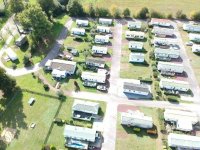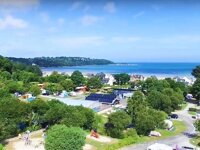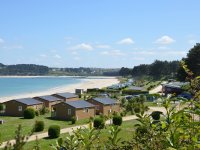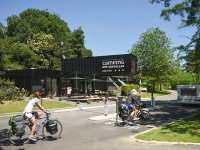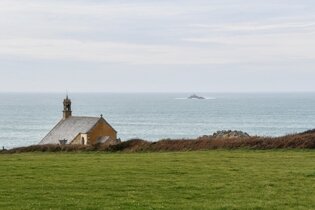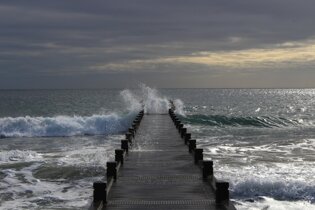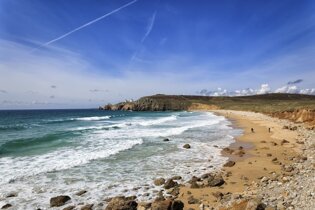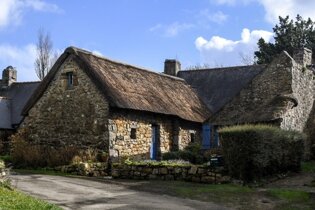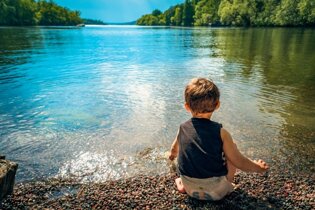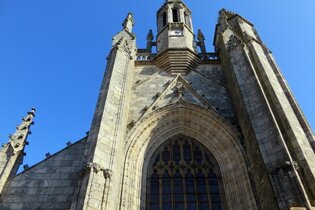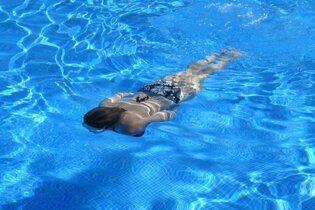Camping in Brittany
5 campsites in France, Brittany for All Year
Campsite Listing Google Map
The following consent is required:
Tracking & performance, Targeting & advertising.
Brittany
Brittany, one of France’s most distinctive regions, boasts miles of dramatic coastline marked with countless coves, rugged rocks and splendid beaches. From the jagged inlets of the Emerald Coast to the white sands of the Quiberon peninsula, it’s a smorgasbord of shape and colour that cannot fail to delight the senses. Attractive little fishing villages shelter bright boats, and bustling cafés serve locally caught seafood and delicious sweet crêpes. Inland, country roads wind through carefully tilled farmland, dense forests and apple orchards, the produce from which is used to make the area’s renowned cider.
Celtic history permeates the Breton culture and landscape – Arthurian legend is as strong here as it is in the UK and the numerous festivals of traditional folk art, music and dance in the charming towns celebrate ancient Celtic influences on Breton culture. The region also has its share of castles, manor houses and ornate churches waiting to be explored, as well as the mysterious and famous pre-historic standing stones at Carnac.
Presenting a truly unique experience, Brittany is a gem that enables the unhurried walker or cyclist to discover an ancient and fascinating side of northern France.
Unknown matrix block type: clear2!
The rolling countryside of inland Brittany, dotted with delightful villages, orchards and medieval towns, is all too often neglected. It is the coast that attracts most visitors: the rugged cliffs, the sandy beaches and the picturesque fishing harbours.
Brittany's 2,700km of rocky coastline offers numerous bays, busy little fishing villages and broad sandy beaches dotted with charming seaside resorts. It's the ideal destination for a camping holiday. The coastline to the north is rugged with a maze of rocky coves, while to the south, the shore is flatter with long sandy beaches.
Inland you'll find wooded valleys, rolling fields, moors and crosses, cathedrals and castles. Strong Celtic roots provide this region with its distinctive traditions, evident in the local Breton costume and music, traditional religious festivals and the cuisine featuring crêpes and cider. Many castles and manor houses, countless chapels and old towns and villages provide evidence of its eventful history and wealth of traditions.
Brittany’s rich Celtic heritage is evident today in its festivals, folklore and customs, and the area is famous for its standing stones, notably the granite megaliths at Carnac. Castles and manor houses, ornate churches and cathedrals are waiting to be explored, as are the bustling weekly markets displaying the freshest regional produce.
The first British visitors to Brittany left England from Cornwall while fleeing the Roman invaders. They landed in an area not unlike their own, Cornwall, with its rocky coastline, inland forests and Celtic civilisation. Today this region is a wonderful destination for family holidays: fantastic scenery, picturesque villages, great food, lots going on and, perhaps above all, superb beaches, great for shrimping and sandcastles, which linger long in childhood memories.
The great thing is that Brittany is not far away and easy to get to, with the ferry from Portsmouth to St Malo being the most direct. The overnight service is popular, allowing you to arrive refreshed and ready for the onward drive to commence your camping holiday.
Campsites in Brittany
For generations, Brittany's superb campsites have attracted campers and caravanners, drawn by campsites in amazing locations, be they close to a magnificent, family-friendly beach or tucked away in the grounds of an old manor. Whether you're taking the tent, trundling around in a motorhome or towing a touring caravan, there are perfect options.
Choose the north coast of the Côtes d'Armor for absolute convenience, picture-postcard villages and wonderfully scenic coastline with majestic rock formations, especially along the Pink Granite Coast. Finistère offers craggy, wild cliffs and wonderful deserted beaches – head to the south coast where the micro-climate is generally benign, the waters calm and inviting. The beaches offer the epitome of a great seaside holiday. Further south in Morbihan the campsites are often elegantly located, with grand castles nearby like Pontivy and Josselin. The Gulf of Morbihan becomes almost sub-tropical.
Campsites for children
Being close to beaches gives many campsites instant appeal for children. And the old adage is true: if the children are happy, then the parents are too. There's no doubt, packing a bucket and spade is a high priority when going camping in Brittany. Those campsites inland have their own unique appeal, perhaps on a farm or in the grounds of a manor house they have plenty of space for kids to run around safely, and a quiet country lane for family bike rides. Many also have small farm animals like goats, chickens, lambs and donkeys that often are a bigger hit with the youngsters than the elaborate waterslides.
Places of interest

Concarnea: Though ancient, this is still a commercial fishing port and is famous for its old walled town – the Ville Clos. Enclosed within the sturdy granite ramparts is a charming labyrinth of narrow, cobbled streets lined with shops, crêperies and enticing restaurants.
Beg-Meil: This is undoubtedly one of the most perfect locations – follow the sandy pathways through the long grasses and across the headland to discover beautiful sandy beaches like Oiseaux and La Cale. The waters are gentle and the sand soft and golden, perfect for youngsters.
Pont Aven: This small Breton town attracts admirers of Gauguin who came here to paint and set up the 'Pont Aven' school of painting. Visitors also come simply because it is charming with the tumbling river running through the centre, the little houses and shops, the galleries and the colourful geraniums festooning every window box in summer.
St Malo: St Malo may be a busy ferry port, but it is deceptively attractive and with lots of historical interest. The old town inside the massive walls is a bustling maze of cobbled streets and a real sense of history that permeates the entire town.
Bénodet: One of Brittany's most picturesque resorts with a small harbour and a lovely sheltered beach. It stands at the mouth of the Odet in an attractive setting backed by an attractive wooded hinterland.
Quimper: This is the oldest Breton city and once the capital of Cornouaille. The cathedral is exquisite, and the Musée des Beaux-Arts and Bishop's Palace are well worth visiting, perhaps after a morning spent mooching around the old narrow streets and admiring the timbered houses. Popular boat trips depart from Quimper bound for Bénodet on the coast.
Quiberon peninsula: The beautiful peninsula, south of Carnac, shows two faces: its wild Atlantic shore (Côte Sauvage) and its sheltered eastern coast of tranquil harbours and gleaming white sands. In some places it is only seven metres wide during high tides and at its tip lies the port of Quiberon, a lively, popular resort with a vast sandy beach, pretty harbour and some superb seafood restaurants. Catch the ferry from Port Maria to Belle-Île, Houat and Hoedic.
Carnac: Carnac offers the usual seaside pleasures at Carnac-Plage, which has a marvellous beach of fine pale sand stretching around the bay. Backed by dunes and pines, it is spacious enough for everyone, even in high season. Of all Brittany's standing stones, none are more famous than those at Carnac. More than 3,000 menhirs still stand today, sprouting from the moorland turf and patiently watching the sunrise and sunset as they have done daily for around 6,000 years.

Cuisine of the region
Fish and shellfish are commonplace; traditional crêperies abound and welcome visitors with a cup of local cider.
Agneau de pré-salé: Leg of lamb fromanimals pastured in the salt marshes and meadows.
Beurre blanc: Sauce for fish dishes made with shallots, wine vinegar and butter.
Cotriade: Fish soup with potatoes, onions, garlic and butter.
Crêpes Bretonnes: The thinnest of pancakes with a variety of sweet fillings.
Galette: Can be a biscuit, cake or pancake; with sweet or savoury fillings.
Gâteau Breton: Rich cake.
Poulet blanc Breton: free-range, quality, white Breton chicken.

